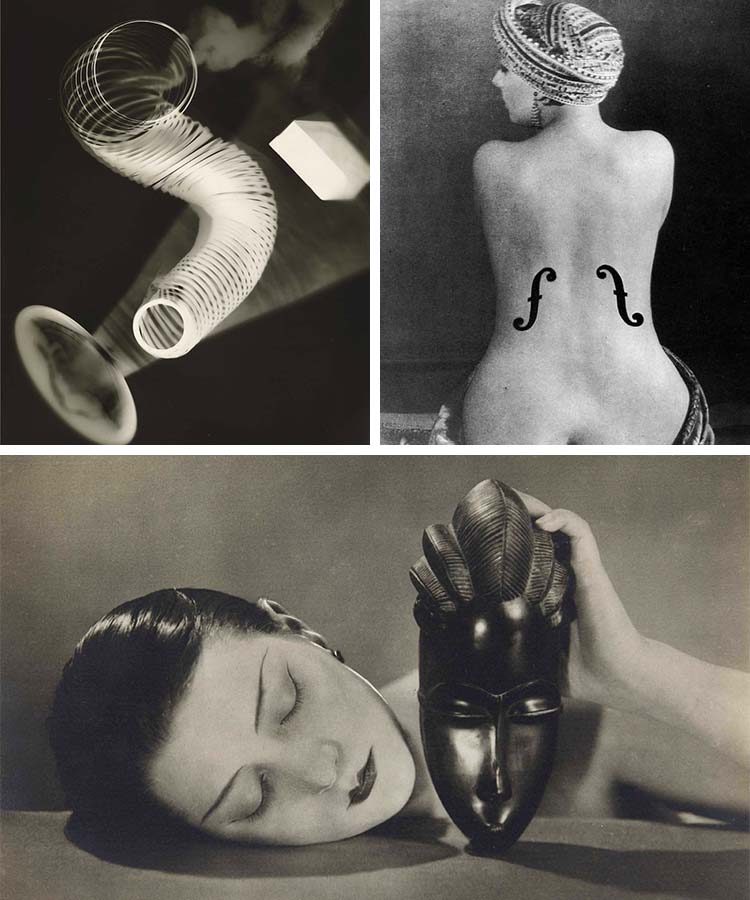
The early 20th century was an exciting time for avant-garde art. After Impressionism, more and more movements began to blossom, led by innovative artists with original ideas on aesthetics. Two of the most iconic movements to be born during the 1900s were Dada and Surrealism. The former considered itself “anti-art” that was founded in randomness, whereas the latter tried to convey unrealistic subject matter in a realistic style. One of the most important artists who links these two periods together is Man Ray.
The American-born artist began as a painter but quickly abandoned traditional art when he discovered Dadaism. This was a starting point for Ray, who immersed himself in avant-garde art and moved to Paris to join other like-minded creatives. During this time, he became a pioneer in photography, creating Surrealist portraiture and photograms. Unafraid of experimentation, his oeuvre pushed the boundaries of mediums that were both old and new.
Scroll down to learn more about Man Ray and his avant-garde photography.
Who was Man Ray?
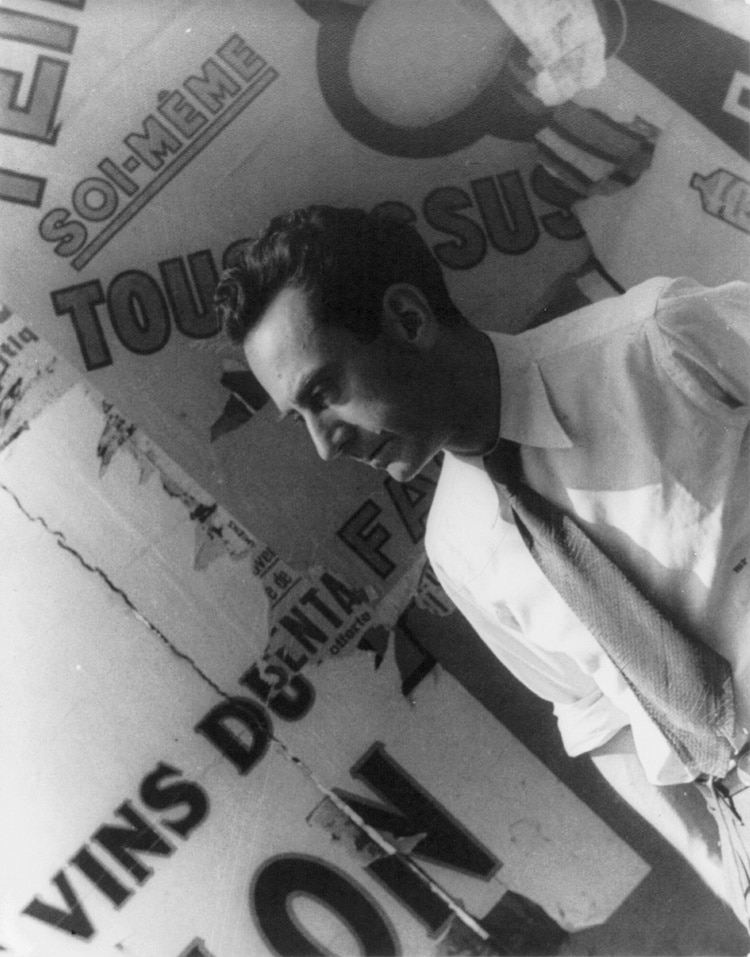
Carl Van Vechten, Man Ray in Paris, 1934 (Photo: Library of Congress via Wikimedia Commons, Public domain)
|
Full Name
|
Emmanuel Radnitzky
|
|
Born
|
August 27, 1890 (Philadelphia, PA, USA)
|
|
Died
|
November 18, 1976 (Paris, France)
|
|
Notable Artwork
|
Le Violon d’Ingres, Glass Tears
|
|
Movement
|
Dada, Surrealism
|
Man Ray (1890 –1976) was an avant-garde artist and photographer who participated in the Dada and Surrealist art movements. Originally named Emmanuel Radnitzky, the family legally changed their surname to Ray when the artist was young to avoid discrimination for being Russian Jewish immigrants.
Ray displayed creative talent throughout his early years and worked as a technical illustrator after high school for a number of years. He hoped to become a professional painter and practiced a range of styles. Then, in 1913, he befriended a pioneer of Dadaism, Marcel Duchamp. This encounter was the impetus for Ray’s interest in the avant-garde, and he quickly set aside traditional painting to pursue other forms of art, most notably photography.
Man Ray and Dadaism

Left: Man Ray, “Lampshade,” 1920 (Photo: liveauctioneers via Wikimedia Commons, PD-US)
Right: Man Ray, “The Gift,” original 1921, edited replica 1972 (Photo: Wmpearl via Wikimedia Commons, CC0 1.0))
Ray was a key member of the Dadaist movement. His friendship with Duchamp cultivated new ideas on art philosophy and aesthetics. He began creating readymade sculptures—ordinary objects that the artist modified in some way—and abstract drawings. After Ray and Duchamp published the first and only issue of New York Dada in 1920, Ray realized that Dada could not compete with New York City and he moved to Paris.
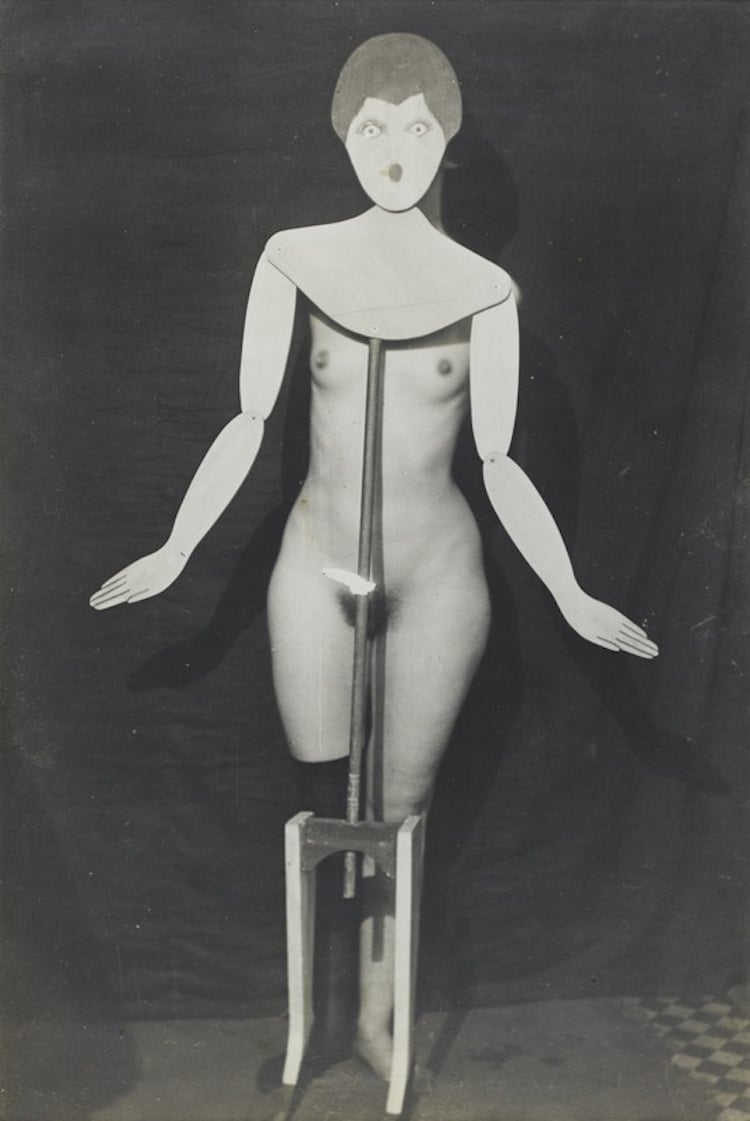
Man Ray, “The Coat-Stand,” 1920 (Photo: Centre Pompidou via Wikimedia Commons, PD-US)
Living in Montparnasse (the artist quarter of Paris) Ray felt inspired to push his creative practice further and began experimenting with photography. Some of his most famous works from this period were photograms, which actually don’t use a camera at all, and are instead created by the artist placing the desired objects directly onto the surface of photographic paper and exposing it to a light source. Ray named his creations “rayographs” after himself.
Man Ray and Surrealism
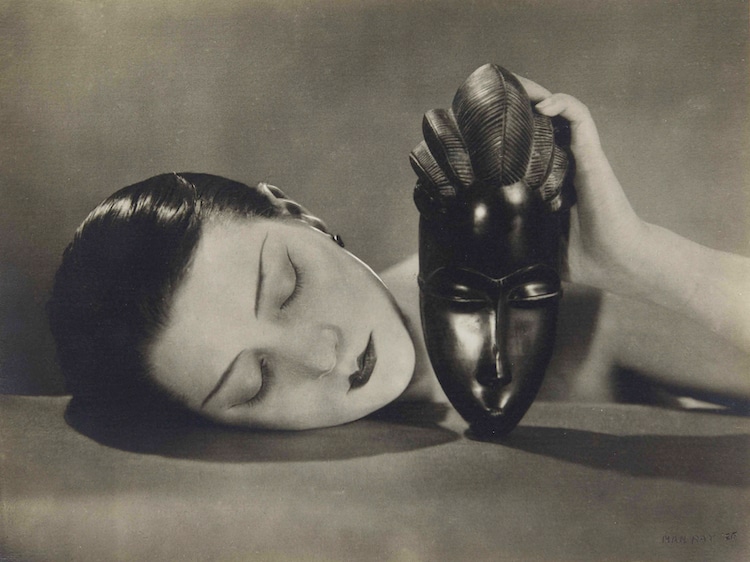
Man Ray, “Noir et Blanche,” 1926 (Photo: Christie’s via Wikimedia Commons, PD-US)
Ray remained in Paris for 20 years. During this time, carved out a name for himself as a leading portrait photographer. Famous artists like Salvador Dalí and Pablo Picasso were captured in his portraits. In addition to these portrayals, Ray experimented in fine art photography with surrealist elements. In particular, the artist attempted to combine the real with the unreal in his images, oftentimes juxtaposing real female models with objects of fascination to him and using various photographic effects.
“I photograph the things that I do not wish to paint, the things which already have an existence,” Ray said.
 Man Ray, “The Violin of Ingres,” 1924
Man Ray, “The Violin of Ingres,” 1924
In 1925, he debuted one of his most iconic works, entitled Violon d’Ingres, at the first Surrealist exhibition. This black and white photo depicts a nude female figure (Kiki de Montparnasse) with two f-holes of a violin painted onto her back. The model was his then-lover and mistress. The composition of his image is inspired by a painting of French Neoclassical painter Jean-August-Dominique Ingres entitled The Valpinçon Bather, which features a curvaceous woman in a similar pose. The title, le violon d’Ingres, is actually a common saying in French that translates to hobby. For Ingres, his hobby was the violin; for Ray, his “hobby” was the woman.
Another piece, Glass Tears, looks like a still from a film with a close-up view of a woman’s eyes as orbicular tears cascade from her face. Ray placed real glass beads on the fashion model’s face to create a striking effect.
Legacy of Man Ray
Ray’s legacy as a pioneering artist has been overshadowed by fellow Dadaist and Surrealist, Duchamp. Even so, the American left an enduring influence on avant-garde art, especially in the field of photography. His work with photograms inspired numerous future artists, and his many experimental portraits continue to dazzle photographers and photography lovers alike.
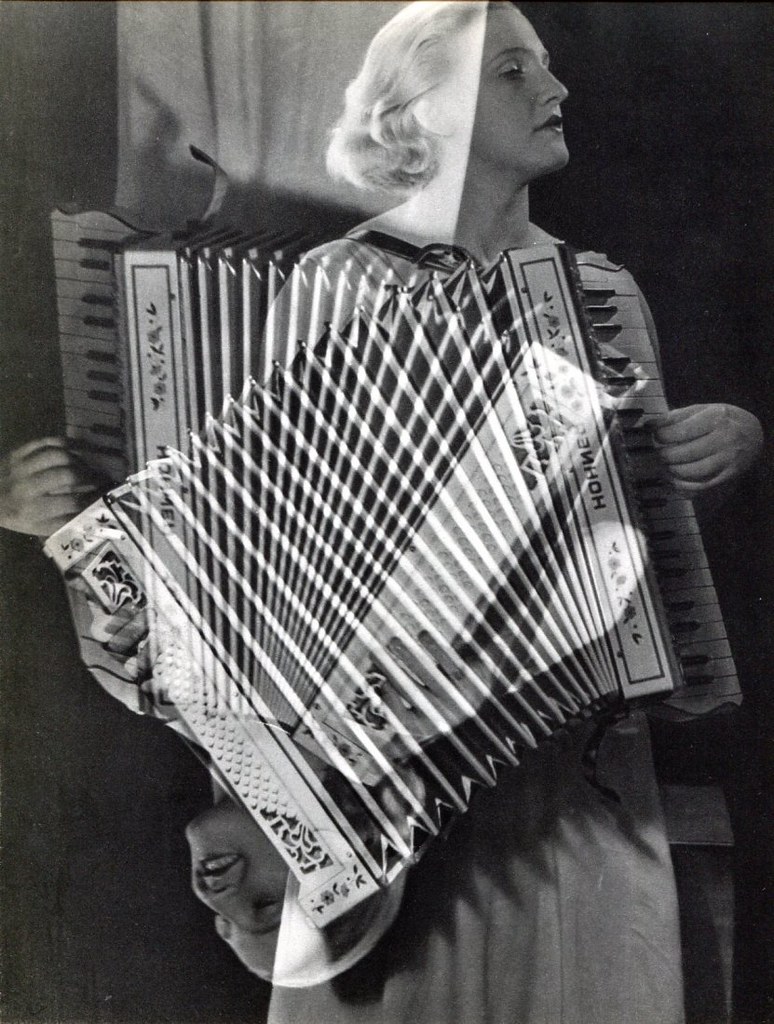 Man Ray, “Eva with Accordion,” 1934
Man Ray, “Eva with Accordion,” 1934
Related Articles:
5 Masters of Surrealism Who Painted Their Dreams and Visualized Their Inner Minds
12 of Art History’s Most Horrifying Masterpieces
Set Sail on a Journey Through 9 of Art History’s Most Important Seascape Paintings
5 Famous Beach Paintings From Art History That Capture Serene Summer Days


